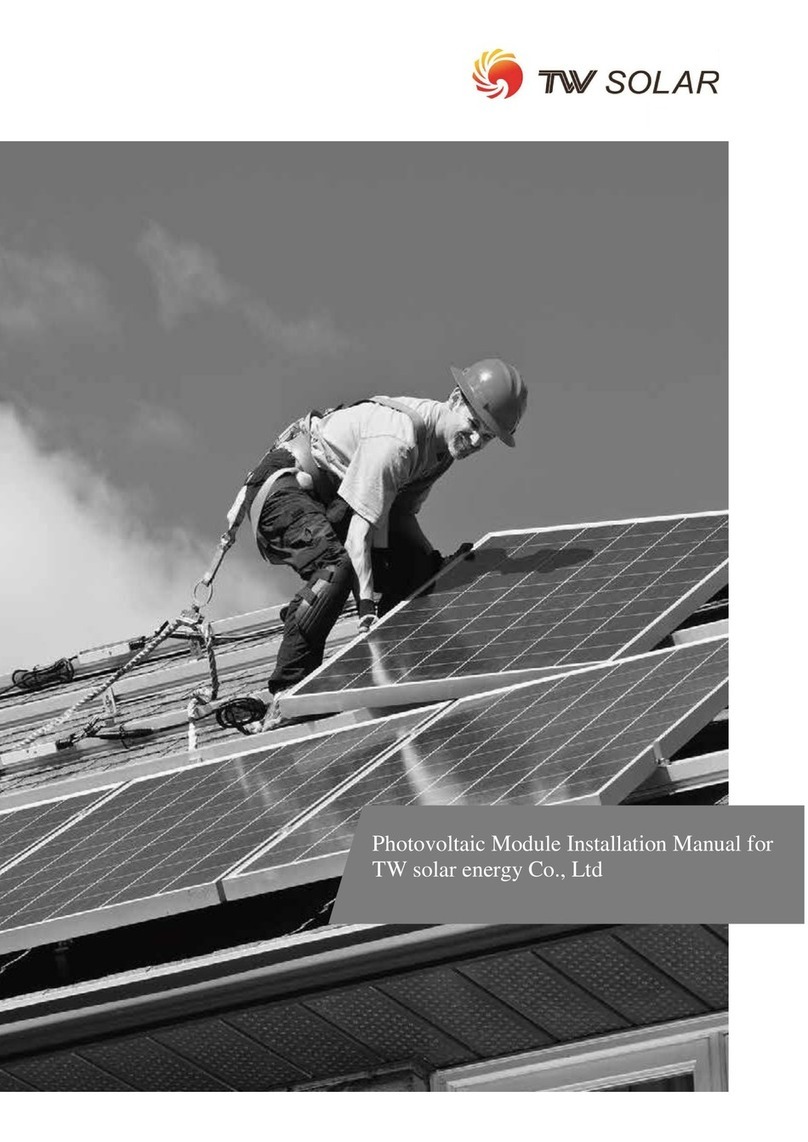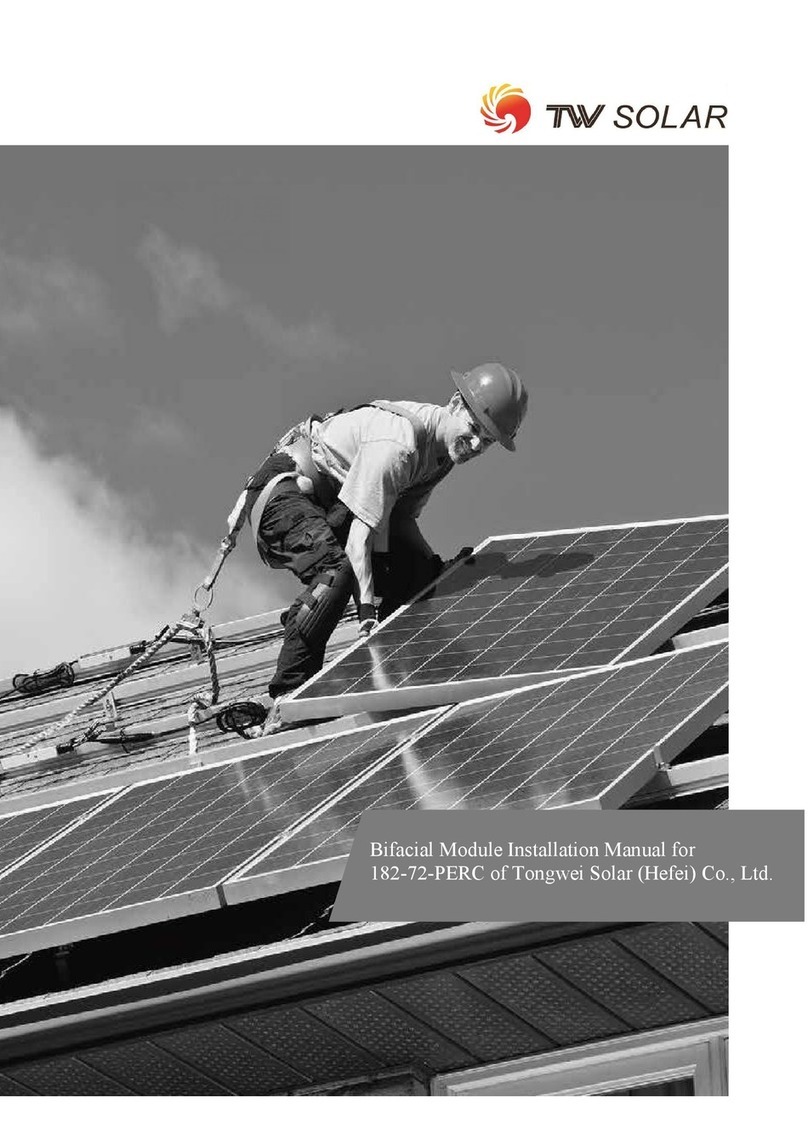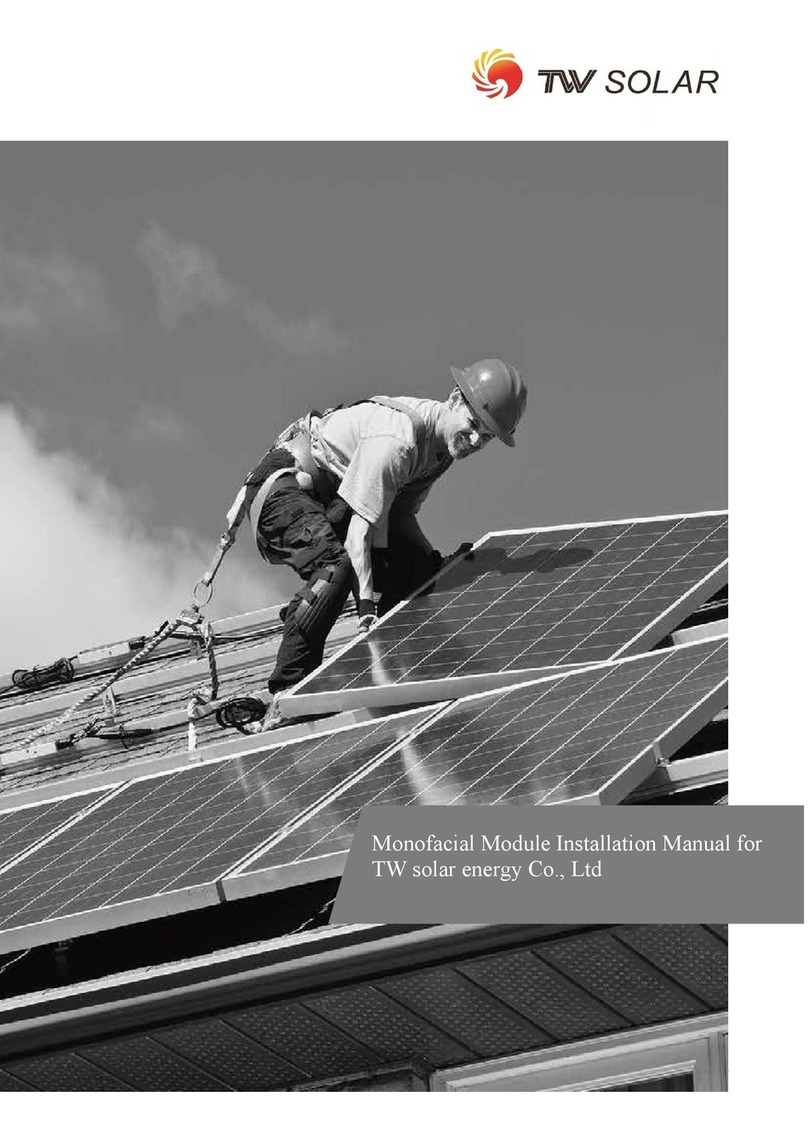
SAFETY & TRANSPORT
Storage in the project site warehouse:
Storage environment requirements: Humidity<85%, temperature -20 ~+50℃; Modules
statically stacked for ≤2 layers.
Temporary storage at the project site: The Modules shall be stored in a dry,
well-ventilated place. They shall not be stacked but shall be covered with waterproof
cloth to prevent dampness in the Modules.
Unpacking description
1. In the outdoor unpacking process, it is prohibited to operate in rainy conditions;
2. If there is wind in the field, special attention shall be paid. Particularly in the event of
heavy wind, it is recommended not to handle the module, and it is necessary to properly
secure the unpacked Modules;
3. The working surface shall be such that the packing box can be placed in a stable, level
position, avoiding being overturned;
4. During the unpacking, it is necessary to wear protective gloves, and avoid scratching
the hands and leaving the fingerprints on the glass;
5. In the case of operation not according to the requirements or in the case of an
unskillful operation, it will result in the fall-off of the protective corner in small amounts,
which will be normal. The effect of the protective corner is to reduce damage due to external
force during transport, and the fall-off of the protective corner will not influence the reliability
of the Modules;
6. Before the unpacking, it is necessary to carefully check the product information on the
carton box, and carefully read the unpacking instruction;
7. Every module shall be carried by two people. When carrying the module by two
people, it is prohibited to pull the junction box.






























